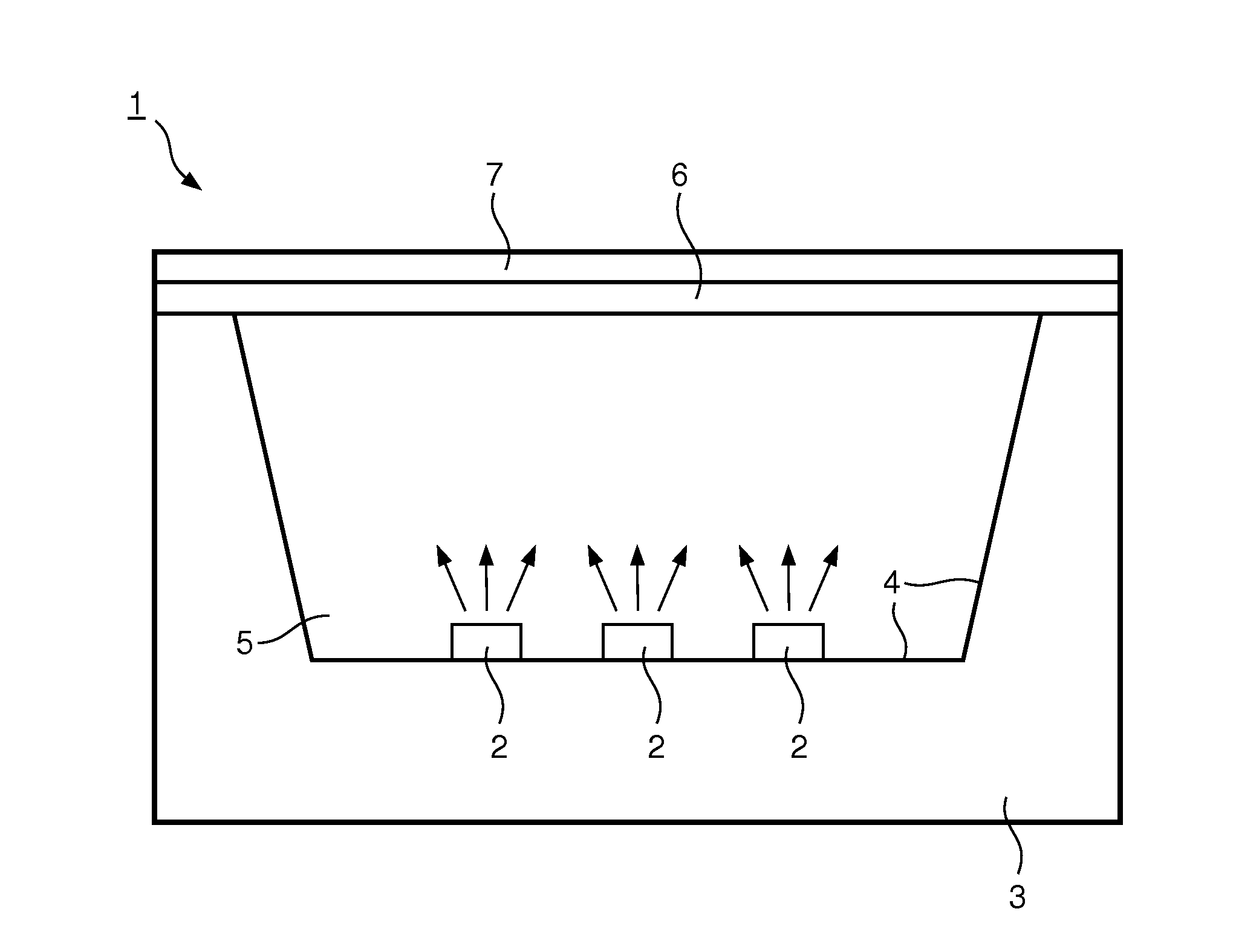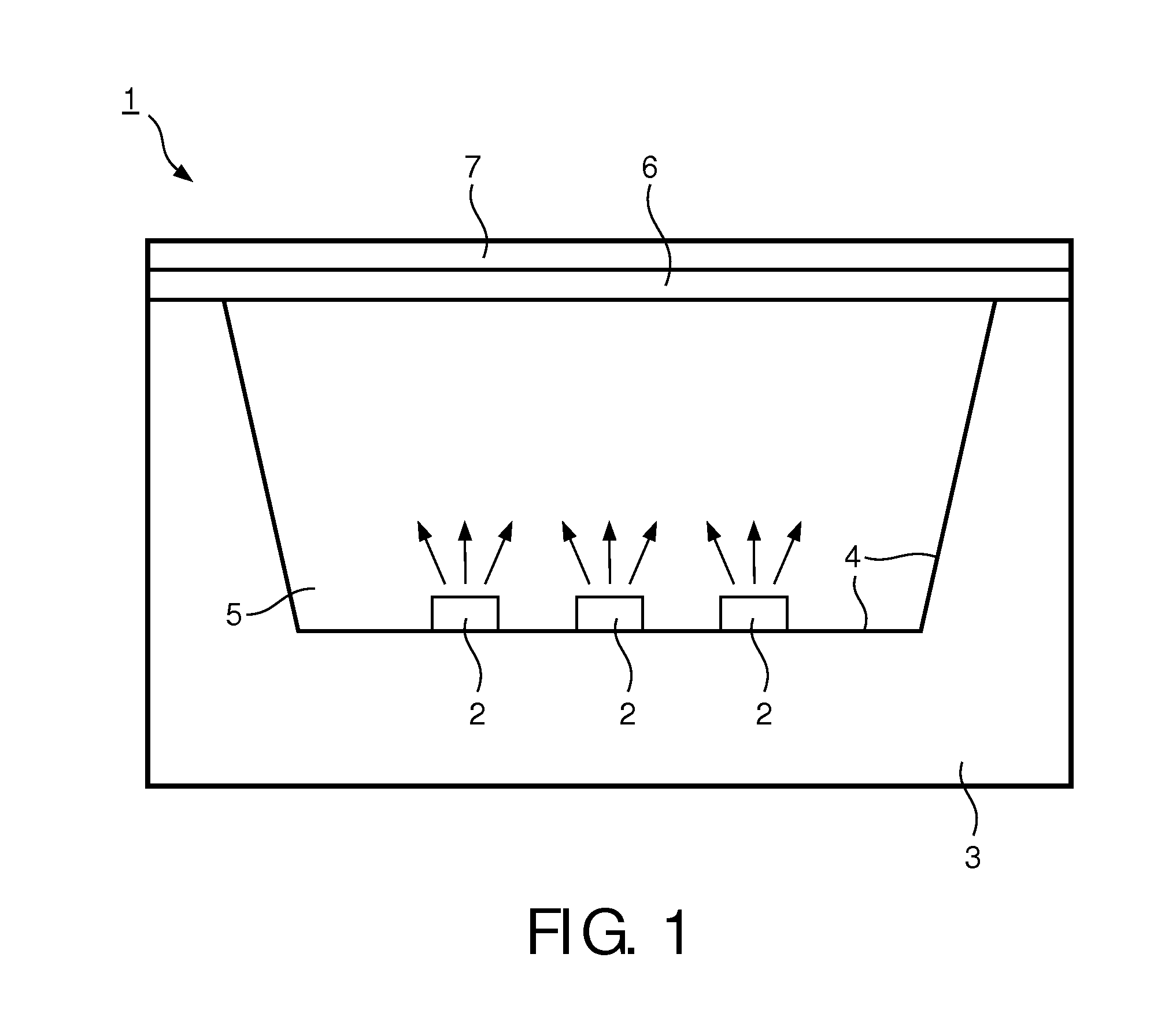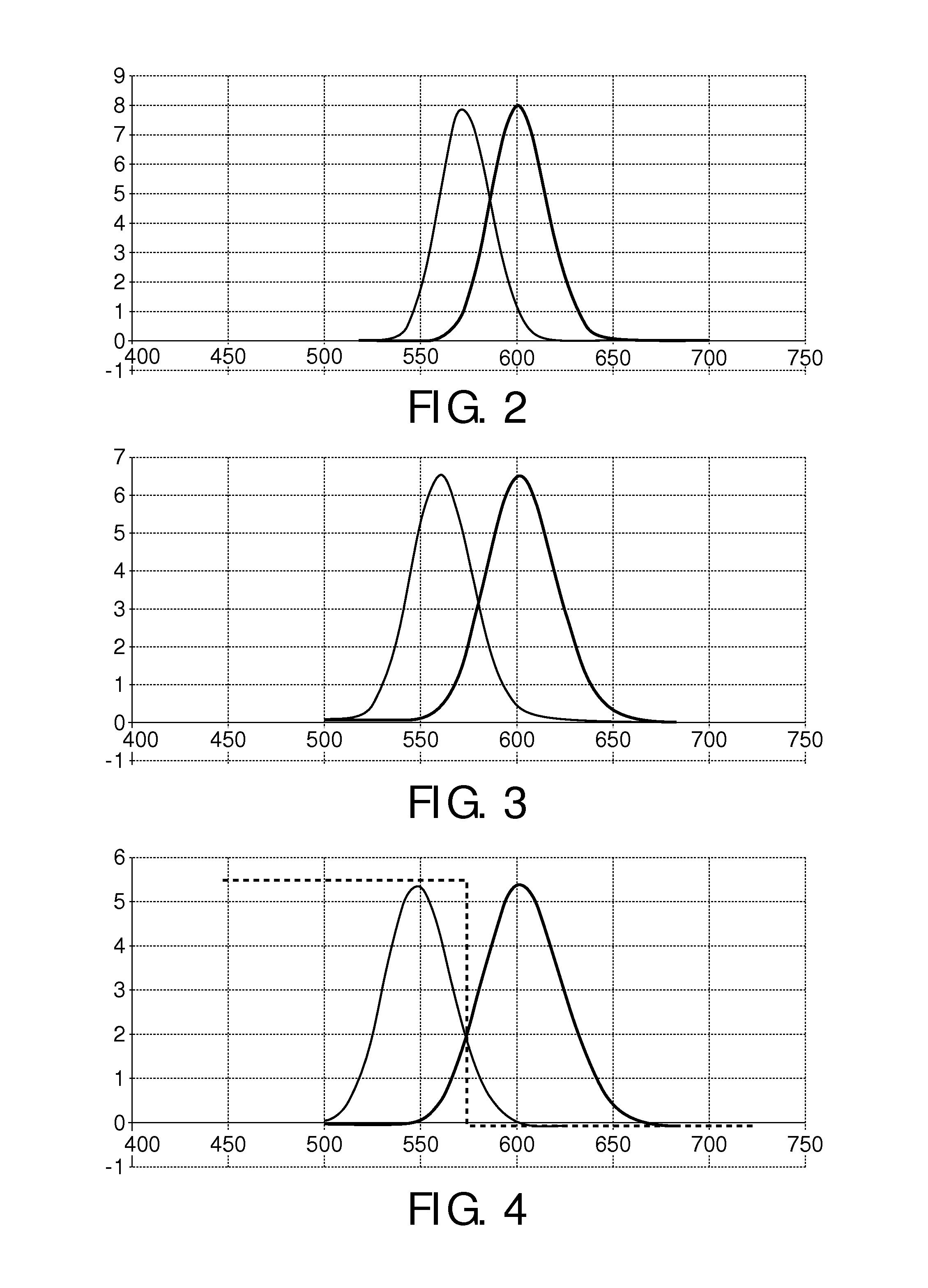Illumination system with light source, radiation converting element and filter
a radiation conversion element and light source technology, applied in the field of illumination systems, can solve the problems of excluding them from practical use, long decay time and too weak absorption, and other approaches to reduce the bandwidth of emission spectra of wavelength converting elements, etc., and achieve the effect of reducing or eliminating
- Summary
- Abstract
- Description
- Claims
- Application Information
AI Technical Summary
Benefits of technology
Problems solved by technology
Method used
Image
Examples
Embodiment Construction
[0022]FIG. 1 illustrates in cross-section an embodiment of the illumination system 1 according to the present invention. Said system 1 comprises a number of light sources 2, which are embodied as a light emitting diodes (LEDs). Although different types of LEDs can be used, it is prefered to apply LEDs which are able to emit primary radiation having a wavelength of 550 nm or less. In the present device LEDs of the GaInN type are used, which are able to emit light having a wavelength maximum between 370-470 nm.
[0023]LEDs 2 are mounted on the bottom surface of a housing 3. On the inside walls of said housing 3, reflective means 4 have been provided, like a mirror of aluminum. During activation of the illumination system, an electrical voltage is applied via electrical leads on electrical connection portions of the LEDs. For reasons of simplicity, neither the electrical leads nor the electrical connection portions are shown. As a result of the activation, LEDs 2 emit radiation. This rad...
PUM
 Login to View More
Login to View More Abstract
Description
Claims
Application Information
 Login to View More
Login to View More - R&D
- Intellectual Property
- Life Sciences
- Materials
- Tech Scout
- Unparalleled Data Quality
- Higher Quality Content
- 60% Fewer Hallucinations
Browse by: Latest US Patents, China's latest patents, Technical Efficacy Thesaurus, Application Domain, Technology Topic, Popular Technical Reports.
© 2025 PatSnap. All rights reserved.Legal|Privacy policy|Modern Slavery Act Transparency Statement|Sitemap|About US| Contact US: help@patsnap.com



